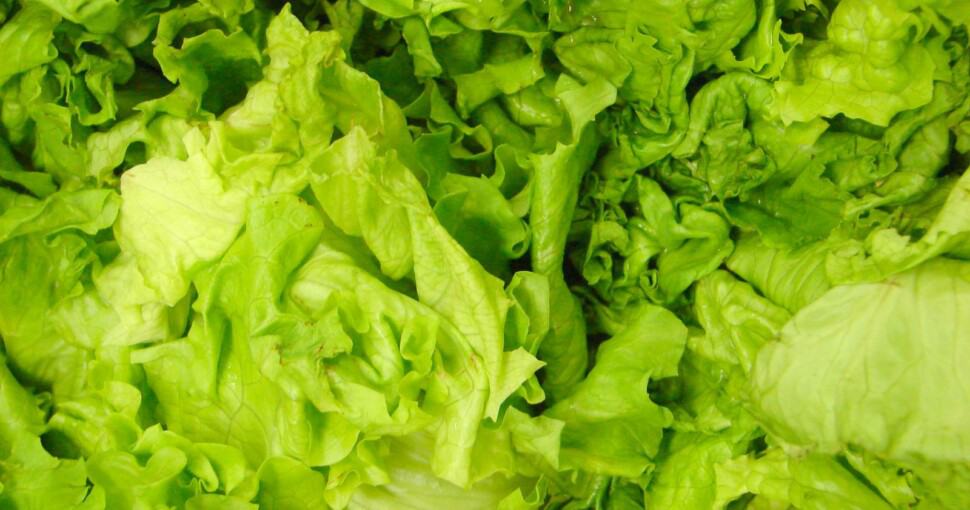Lettuce is grown everywhere. Lots of it. The world produced about 24.9 million tons of lettuce in 2013. Though, anyone who’s not eagle-eyed might think even more lettuce is filling veggie patches, farmers’ markets, and supermarkets than it actually is. The salad staple has many lookalikes.
Contents
It’s part of a crowd of leafy greens, after all. And it’s easy to get all the green leafy veggies mixed up.
Lettuce is from the daisy family, and its scientific name is Lactuca sativa. It comes in various shapes, sizes, and colors and can be sorted into 1 of 4 groups based on its appearance:
- Head lettuce. These varieties grow in a round shape, like iceberg and butterhead.
- Romaine lettuce. You can tell romaine lettuce by its elongated head and long leaves with thick ribs in the middle.
- Leaf lettuce. These varieties’ long leaves loosely branch off a stem.
- Celtuce lettuce. This lettuce has a strikingly thick stem and comparatively less impressive thin leaves.
Every type of lettuce has a plant twin. Although a plant might look like lettuce, its taste and texture could be completely different. So, a recipe could be ruined by the wrong leafy green ingredient. Here’s a round-up of the top plants that look like lettuce, so you never unknowingly add a bitter, chewy leaf when you want 1 that’s sweet and crisp.
Lettuce is so popular that it made it onto the USDA’s list of America’s 7 most-eaten veggies – twice. Americans love their lettuce, whether wrapped around burger patties, whizzed up in smoothies, or drenched in salad dressing! But some of the munched leaves might not be the real deal. Don’t be fooled by these lettuce lookalikes.
1. Cabbage (Brassica oleracea)
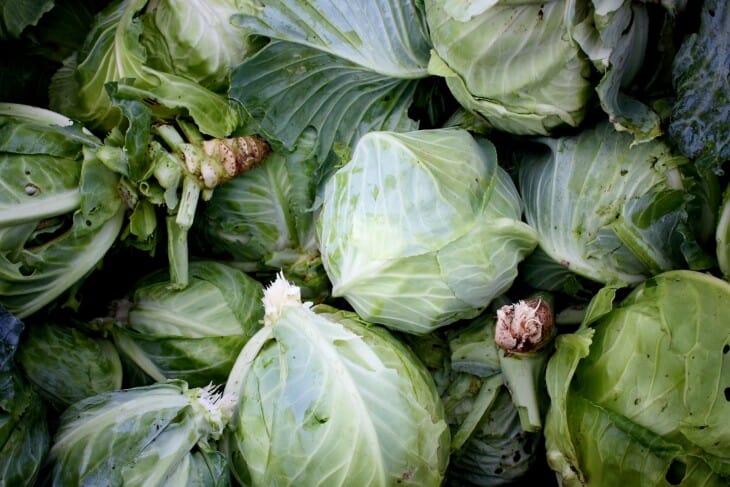
Green cabbage is iceberg lettuce’s spitting image. It can also be mistaken for butterhead lettuce. They all look like green, leafy balls. Their leaves wrap around a core, starting small and becoming wider with every layer. Adding to the confusion, both cabbage and butterhead lettuce come in red, too.
Related: 5 Plants That Look Like Cabbage
However, look closer, and you’ll spot the differences. Cabbage heads are rounder and denser than lettuce heads and have tougher leaves. Cabbage and lettuce also have different flavors, textures, and nutrition.
Cabbage tastes peppery and crunches with every bite, whereas lettuce is crisp (iceberg) or soft (butterhead) with a mild flavor. The flavor difference is down to cabbage being in the sharp-tasting mustard family. Cabbage also has more fiber, vitamins, minerals, and antioxidants than iceberg lettuce (except for vitamin A).
2. Napa Cabbage (Brassica rapa)
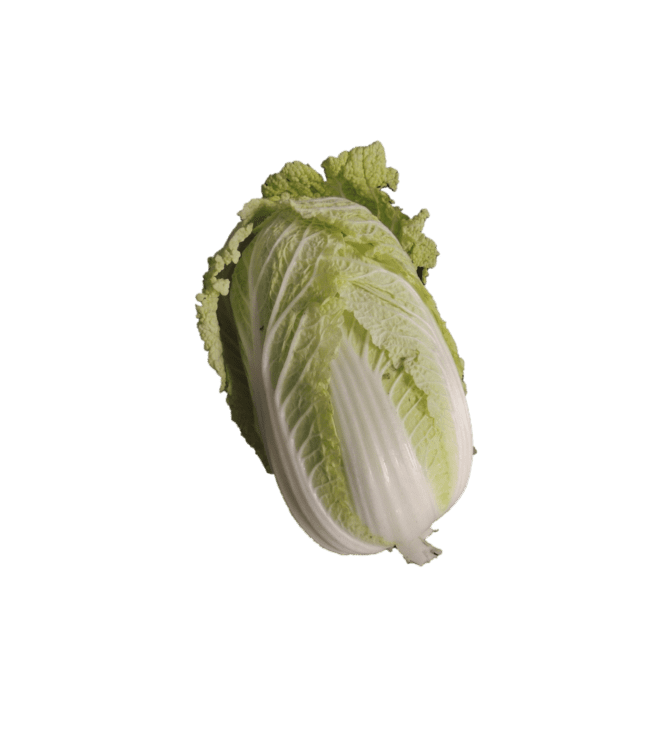
Napa is another cabbage type that’s often confused with lettuce. With long, wrinkly leaves forming an oblong head, napa cabbage resembles romaine lettuce. Both napa cabbage and romaine lettuce also have thick white ribs in the middle of their leaves.
Both leafy greens can be eaten raw or in cooked dishes and have a mild flavor and crisp texture when raw (even though napa cabbage is in the same mustard family as pungent-tasting green cabbage).
However, napa cabbage leaves are lighter-colored (white in parts) and more tightly wrapped than the looser, deeper-green romaine leaves. Napa leaves are also crinkly, while romaine leaves are gently ruffled.
3. Celeriac (Apium graveolens)
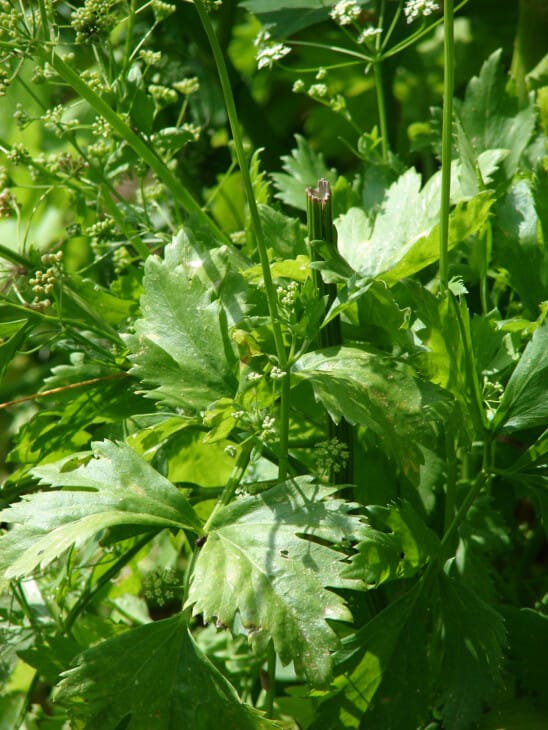
Celeriac, from the parsley family, and celtuce are lesser-known veggies that could pass for each other. They look unusual, with bulky stems and green, leafy crowns. Celeriac has a bulbous stem and leaves that look like celery’s. In contrast, celtuce’s stem is elongated, and its leaves are long and thin.
Celeriac and celtuce grow worldwide. Celeriac is most popular in Europe, North Africa, and South America, and celtuce is a favorite in China. The vegetables can be eaten raw or cooked.
Both veggies are prized for their substantial stems. Celeriac stems grow up to 4.7 inches long, and celtuce is harvested when its stem gets close to 7 inches long. The leaves get less attention. Bitter-tasting celtuce leaves are often thrown out, and celeriac leaves sometimes end up merely as garnish.
4. Kale (Brassica oleracea)
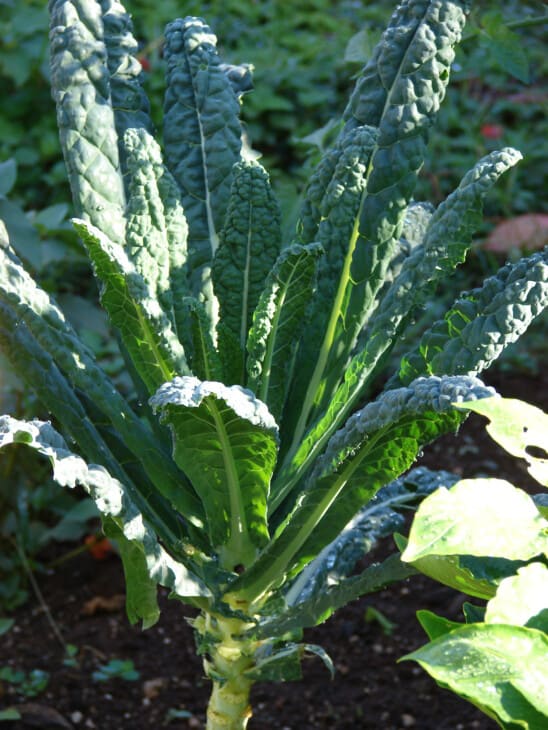
Kale, yet another leafy green from the mustard family, and leafy lettuce share many features. They both have long leaves that grow loosely from a single stem instead of wrapping on top of each other to form a head.
Kale leaves are different colors, from blackish green to red. There’s a range of leafy lettuce colors, too, although these leaves don’t get as dark as kale. Kale can be smooth, frilly, or bumpy. Leafy lettuce also has different textures and edges.
The standout differences between kale and leafy lettuce are that kale’s leaves are thicker and have a stronger flavor. It also packs more nutrition into its leaves than leafy lettuce. Kale is so full of goodness that it’s been named 1 of the top nutrient-filled veggies.
5. Escarole (Cichorium endivia)
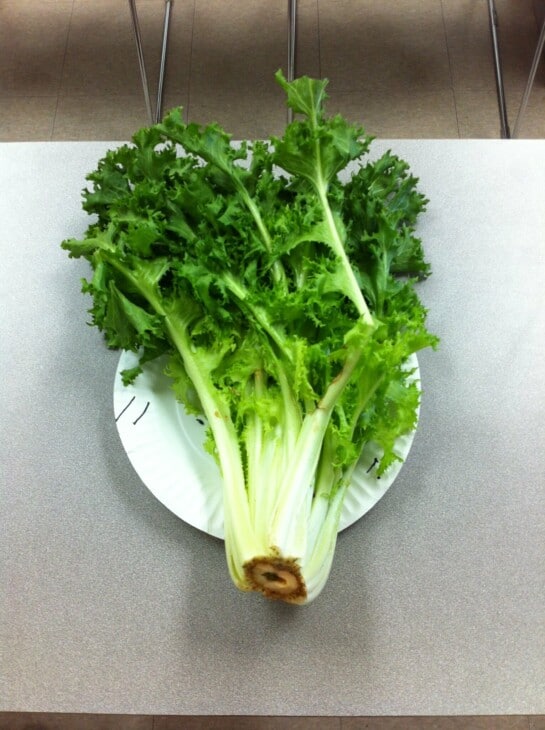
Escarole is a butterhead lettuce twin from the chicory family. Although escarole wouldn’t look out of place in a bowlful of lettuce leaves, it’s not a type of lettuce but a flat-leafed endive.
At first glance, escarole looks remarkably similar to butterhead lettuce because they both have wide green leaves. But differences can be seen when the leaves are scrutinized, especially at the edges. Escarole’s leaves are wrinkly and look like they’ve been raggedly torn at the edges, while butterhead’s leaves are smooth.
Another sure way to tell escarole from butterhead lettuce is to take a bite. Butterhead lettuce tastes sweetish, and escarole is bitter. Their textures also differ. Escarole’s outer leaves are chewy, while butterhead’s leaves are melt-in-your-mouth soft.
6. Spinach (Spinacia oleracea)
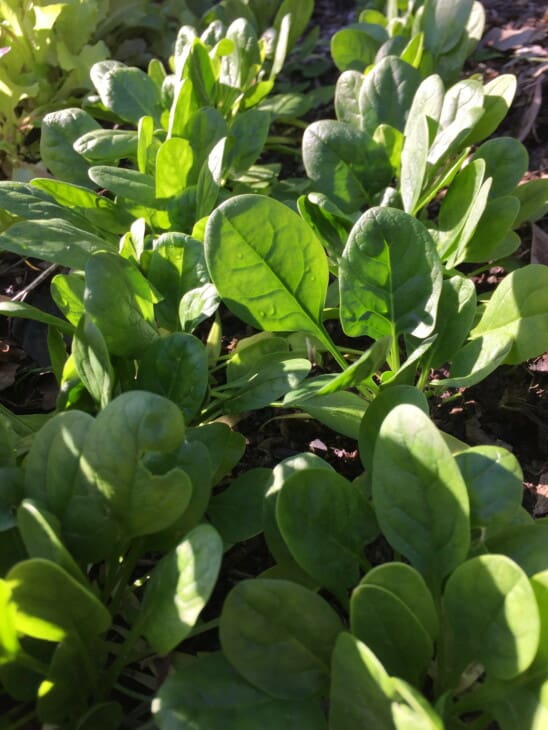
Spinach resembles some types of leaf lettuce. They both grow in loose rosettes, so they look alike while growing and after being harvested. People have likely been confusing these leafy greens for over 2,000 years because that’s how long they’ve both been cultivated.
The leaves also look similar when they’re young. They’re often found together in baby leaf mixes, and only super-observant leafy green fans can instantly tell them apart. The most noticeable differences between spinach and leaf lettuce are the shape and color of their leaves.
Spinach is part of the goosefoot family, and its leaves are triangular, like geese’s feet. On the other hand, leafy lettuce’s shape varies from wavy or frilly to oak-leaf-like. Spinach is dark green, whereas leaf lettuce can be shades of green, red, burgundy, or a mix of these colors.
7. Beet Greens (Beta vulgaris)
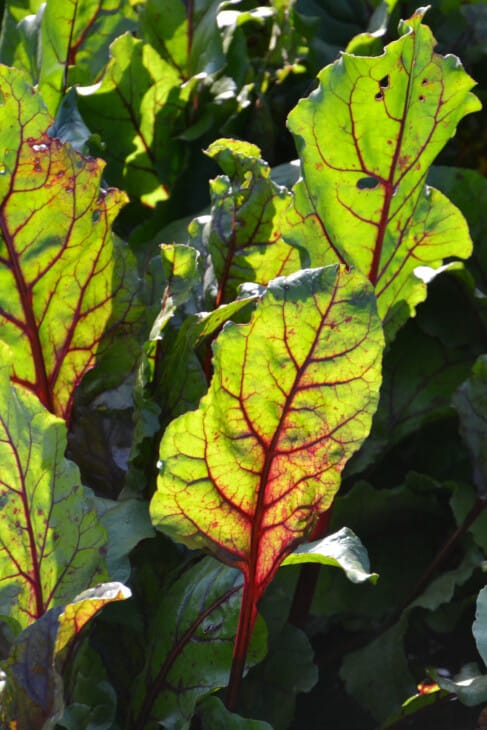
Beet greens are the leaves that top the heart-shaped purple root that usually makes it onto plates. These leaves are smooth, wavy, and green and call to mind leafy lettuce. However, beet is in the goosefoot family, and its triangular leaf shape is more similar to spinach than lettuce.
An unmissable difference between beet greens and leaf lettuce is that beet greens have slender red stems, red ribs down their middle, and red veins. Some red leaf lettuce is completely red or red at the tips, but it doesn’t share beet greens’ bold red stem and rib.
Flavor also sets beet greens and leaf lettuce apart. Beet greens and leaf lettuce both taste mild and sweet, but beet greens have added earthiness. The leaves’ flavors complement each other in a simple vinaigrette-dressed green salad.
8. Frisée (Chicorum endivia)
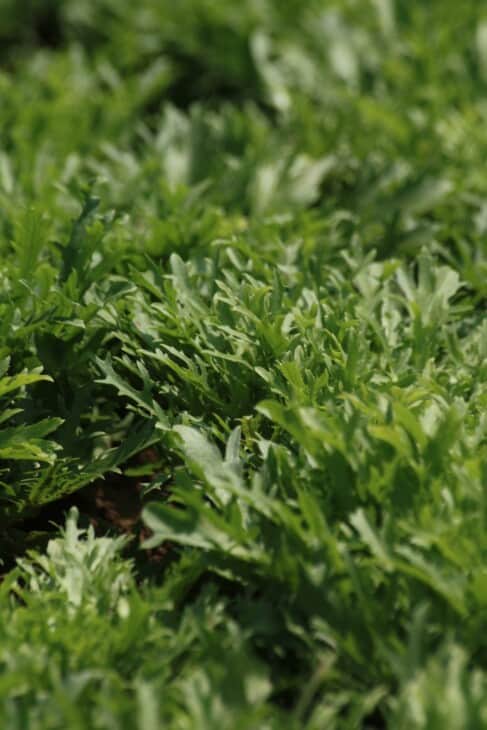
Like its relative escarole, frisée is a leafy green from the chicory family that looks like lettuce. It has frizzy light-green leaves similar to the frilly light-green leaves grown by heirloom lettuce varieties like black-seeded Simpson.
What separates frisée and frilly lettuce varieties are their leaf shapes, core colors, and flavors. Frisée’s leaves are thin, yellowy green near the plant’s center, with a hint of pepper and bitterness. In contrast, frilly lettuce has wider leaves that are light green all over and taste sweet.
Another difference between frisée and lettuce is that you can eat the whole lettuce, whereas the yellow-green leaves at frisée’s core are too bitter for most to swallow.

